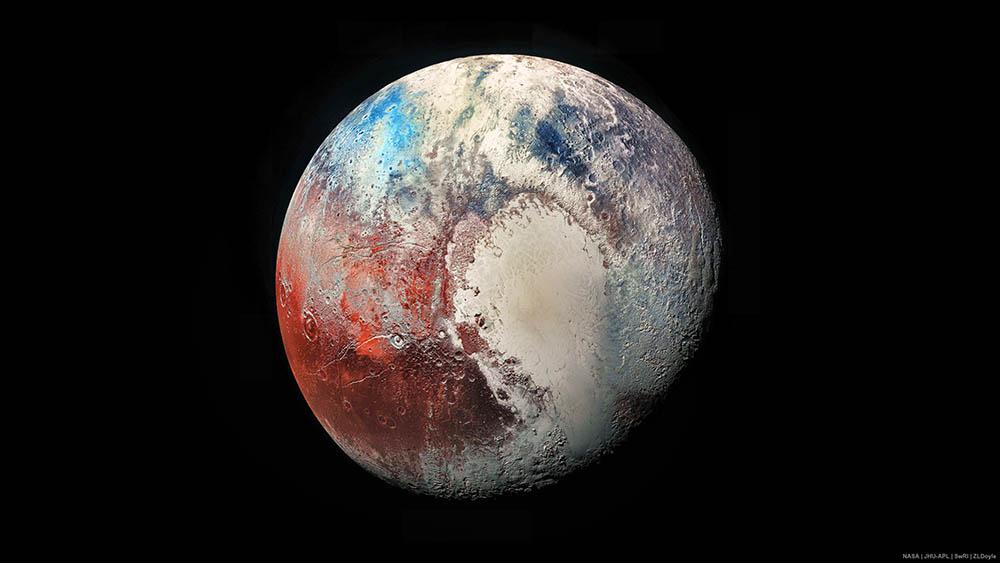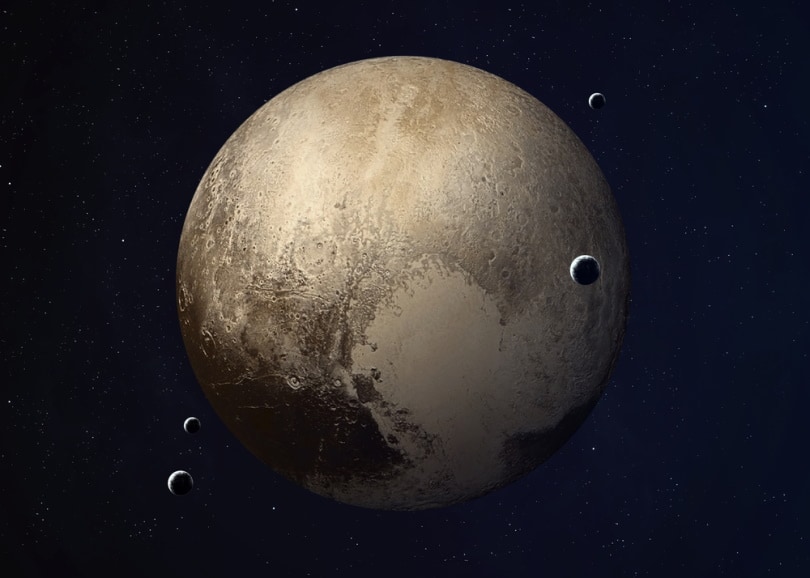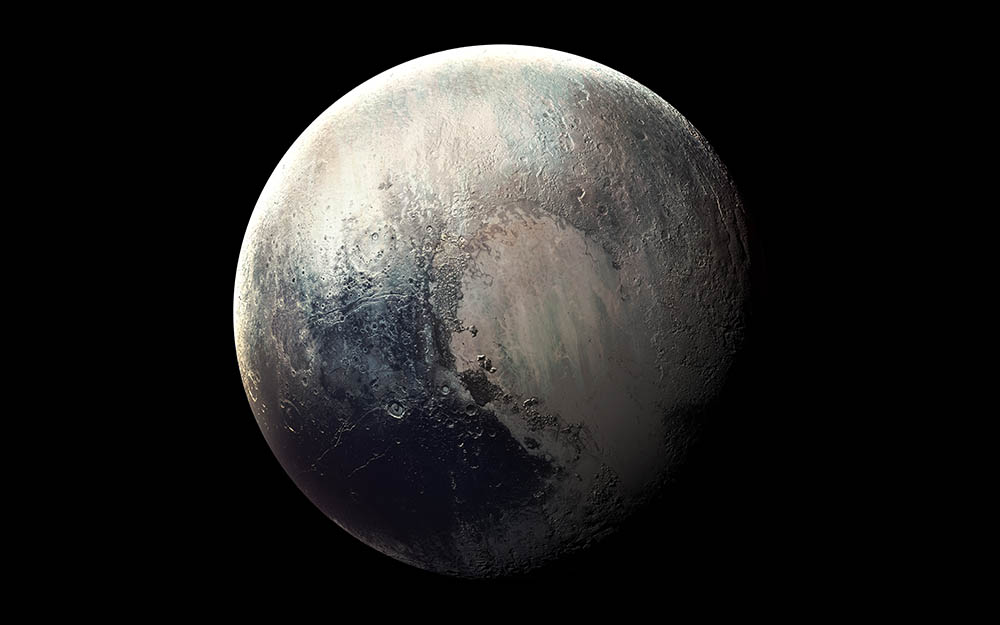How Big Is Pluto? What You Need to Know!
Last Updated on

Pluto was classified as a planet for 76 years before scientists stripped the astronomical body of that title, and instead named it a dwarf planet. Pluto lost its planet designation partly because it’s too small to be a planet.
In fact, scientists realized that if they were to consider Pluto a planet, then they would have to do the same for Eris (another dwarf planet), Ceres (an asteroid), Charon (Pluto’s moon), and a host of other similarly sized objects.
But just how big, or small, is Pluto? Well, Nasa’s New Horizons visited the world in 2015, and it turns out that Pluto is bigger than astronomers thought, though unfortunately not big enough to be a planet again.
According to New Horizons¹, the diameter of Pluto measures 1,473 miles. For reference, this is around two-thirds the diameter of our moon.
But, being stripped of its planet classification does not make the dwarf planet any less interesting. If you’d like to learn some interesting facts about Pluto, keep reading!

Pluto Has Five Moons
Despite being relatively small, the faraway dwarf planet has five moons of its own. They’re named Charon, Hydra, Kerberos, Nix, and Styx.
Because Charon is half the size of Pluto itself, the dwarf planet and its largest moon orbit one another. For this reason, Charon and Pluto are mutually tidally locked. This means that the same surface of each body always faces the other.

Pluto’s Covered in Water Ice
According to a map made by Nasa with the aid of the New Horizons mission, Pluto contains a large amount of water ice. In some places, this was not visible.
Nasa officials wrote¹ that “the map still shows little or no water ice in the informally named places called Sputnik Planum (the left or western region of Pluto’s ‘heart’) and Lowell Regio (far north on the encounter hemisphere).” They suggest that in these areas, Pluto’s icy bedrock is concealed by methane, nitrogen, and carbon dioxide.
It Was Named by An 11-year-old Girl
The name Pluto was suggested by 11-year-old Venetia Burney Phair. Phair recommended the name to her mother and grandfather over breakfast after her grandfather announced the discovery of what was then thought to be the ninth planet.
When the suggestion reached astronomers at the Royal Astronomical Society, it was received with enthusiasm for two reasons.
Firstly, Pluto was the name of the Roman god of the underworld, a name that seemed apt for the dwarf planet’s dark and remote position.
Secondly, the first two letters in Pluto are the initials of Percival Lowell, the astronomer who predicted the existence of a ninth planet beyond Neptune.

Pluto’s Got a Big Heart
Nasa’s New Horizons mission provided the world with new information, data, and images of Pluto and its moons. One such image reveals a giant heart on Pluto’s surface¹, an area that is largely featureless. Scientists believe this is a sign of ongoing geological processes.
It’s Got an Atmosphere
Pluto has an atmosphere that’s made up primarily of nitrogen, with a small amount of methane and carbon monoxide. From a distance, the dwarf planet appears to be encircled by a brilliant blue haze¹ that extends 120 miles above its surface.
The atmosphere on Pluto is constantly changing, just as it does on Earth. When Pluto is close to the sun in its orbit, icy water on the surface begins to evaporate, contributing to a thicker atmosphere. As it travels away from the sun, the gases begin to freeze, falling back towards the dwarf planet’s surface as snow¹.

Final Thoughts
Pluto may no longer be a planet, but it’s a fascinating world with a blue atmosphere and methane snow. It’s in a constant tidally locked orbit with a moon that’s half its size, and it continues to surprise scientists and astronomers worldwide!
Featured Image Credit by: Wow Galaxy, Shutterstock
About the Author Cheryl Regan
Cheryl is a freelance content and copywriter from the United Kingdom. Her interests include hiking and amateur astronomy but focuses her writing on gardening and photography. If she isn't writing she can be found curled up with a coffee and her pet cat.
Related Articles:
What Is the Best Binocular Magnification for Hunting? Optical Features Explained
Can You Use Binoculars to Look At Stars? How to Choose the Right Pair
15 Crucial Facts About Ultraviolet Rays & the Sun
What Constellation Is Spica In? The Interesting Answer!
10 Interesting Leo Constellation Facts, Myths, and FAQs
15 Interesting Pegasus Constellation Facts, Myths, and FAQs
6 Interesting Sagittarius Constellation Facts, Myths, and FAQs in 2024!
What Are Constellations? Where Did They Come From?
